Symphyotrichum novae-angliae
Symphyotrichum novae-angliae New England aster
Add to MyPlants View Locations
One of the most showy asters of the season, sometimes one comes across whole fields of purple blooms. Numerous entire leaves clasp the hairy stem of this aster. The Monarch butterfly drinks the nectar of this flower during migration.
Habitat & Range
Common in fields, along roadsides, and on waste grounds.
Found throughout the state, but more prevalent in the south.
| EMP: | FACW |
|---|---|
| NCNE: | FACW |
Phenology
Flowers late August through September.
Characteristics
Flowers branching clusters of stalked flowers at top of stem and arising from upper leaf axils. Branches are often leafy with many flowers. There are up to 100 purple rays and a golden yellow center that turns reddish-purple with age. Bracts are in 3 to 5 layers, quite narrow, green to purple-tinged, widely spreading. Peduncles up to 1.5 in long with a few bracts below the flower. Peduncles and bracts are covered with glandular and nonglandular hairs.
Leaves lance-oblong, entire, sessile, tapering to a pointed or rounded tip; base with a pair of lobes that extend around he stem and clasp it. Underside of the leaf is covered with soft hairs. Basal leaves more spatula-shaped and along with the lower stem leaves wither away by flowering time. As leaves go up the stem, they become more densely packed.
Stems are single or multiple from a stout rootstock or short rhizome, mostly erect and stout, hairy below and glandular above.
Fruit achenes densely hairy, gets carried away by the wind.
Plant Codes
S-rank: S5 (Secure)
G-rank: G5 (Secure)
Symphyotrichum novae-angliae New England aster
Synonyms: Aster novae-angliaeAdd to MyPlants View Locations
Plant Summary
Common Names
Symphyotrichum

















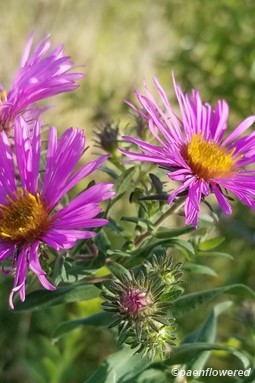
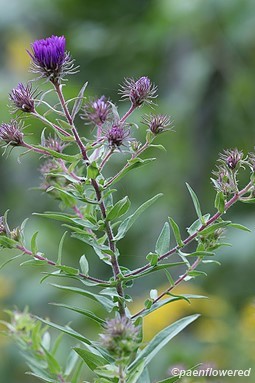
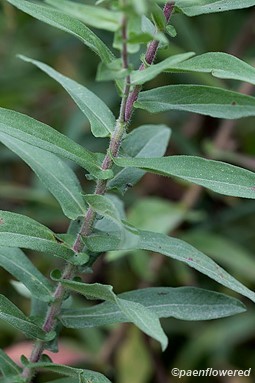
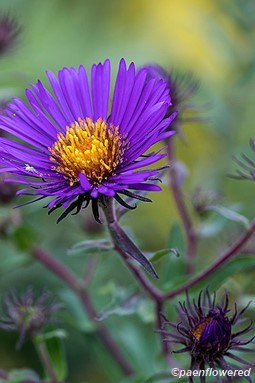
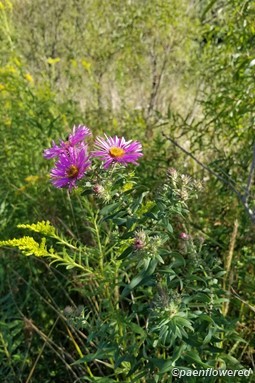

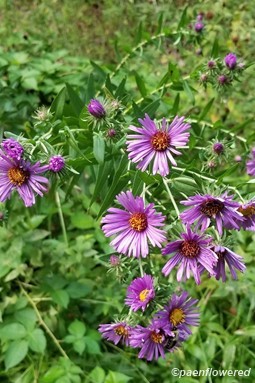

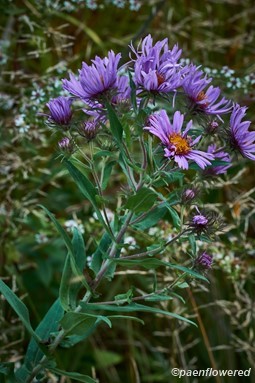

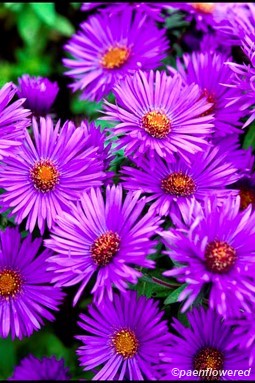
Comments
Have you spotted this plant in your area? We'd love to hear about your experience! Share your comments or questions about the plant below. Comments are moderated before posting.